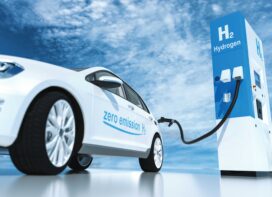 The 17th ITS World Congress held at Busan, South Korea in October 2010 was an excellent opportunity to come face to face with the cutting-edge technologies in the transportation sector and applications of intelligent systems. The conference was attended by scholars, experts and policymakers from over 80 countries. Busan, a bustling city of approximately 3.6 million residents, is located on the south eastern tip of the Korean peninsula. The natural environment of Busan, the second largest city of Korea, is a perfect example of harmony between mountains, rivers and sea. The conference comprised scientific and technical papers on the use of ITS in public transport, vehicle to vehicle and infrastructure communication, simulation and modeling, traveller information system, advanced drivers assistance systems, etc. In addition, several showcases and exhibitions from leading partners of the ITS industry had become a part of the conference. India made a strong presence too in terms delegates and presentation of technical papers.
The 17th ITS World Congress held at Busan, South Korea in October 2010 was an excellent opportunity to come face to face with the cutting-edge technologies in the transportation sector and applications of intelligent systems. The conference was attended by scholars, experts and policymakers from over 80 countries. Busan, a bustling city of approximately 3.6 million residents, is located on the south eastern tip of the Korean peninsula. The natural environment of Busan, the second largest city of Korea, is a perfect example of harmony between mountains, rivers and sea. The conference comprised scientific and technical papers on the use of ITS in public transport, vehicle to vehicle and infrastructure communication, simulation and modeling, traveller information system, advanced drivers assistance systems, etc. In addition, several showcases and exhibitions from leading partners of the ITS industry had become a part of the conference. India made a strong presence too in terms delegates and presentation of technical papers.
A scientific paper titled “Simulation of Mixed Traffic Using Embedded Neural Network Based Vehicle Following Models” was presented by me as a part of the scientific papers session ‘Simulation and Planning’. This paper, co-authored by Professor Tom V Mathew, IIT, Mumbai, focuses on a method of simulating mixed traffic conditions prevalent in countries like India. Mixed traffic consists of various types of vehicles comprising passenger cars, three wheeled auto-rickshaws, light commercial vehicles, buses, trucks, etc. Static and dynamic characteristics of these vehicles differ significantly and the traffic simulation in mixed traffic conditions poses a challenge to the research community. Mixed traffic consists of various types of vehicles compared to the homogeneous traffic conditions where the passenger cars are more prominent. In the past few years, traffic simulation was considerably developed for the homogeneous traffic conditions and the little efforts to model mixed traffic conditions are limited in extent. Hence, in this study, the effect of vehicle-type is explored and the simulation of mixed traffic conditions is detailed. In this paper, a neural network based model is proposed for modeling the mixed traffic conditions.
 We had the opportunity to take technical ride on the Busan Gimhae Light Rail project which featured a driverless rubber-tired system operation. The line has a planned length of 23.92km with 18 stations and a design capacity of 176,000 passengers per day. It is expected to be functional by April 2011. The fleets consist of two car train sets and the line will be fully automated. Standard gauge is adopted for the rails. Advanced ITS technologies are applied to the light railway systems and vehicles are equipped with safety devices such as CCTV, fire detector and the emergency stop switch systems. The control center is able to detect the emergency circumstances through the CCTVs installed inside and take immediate action to evacuate passengers safely by means of internal announcements. The disaster-control system decelerates or halts the vehicle operations in dangerous conditions such as earthquakes, heavy rain or wind. Busan Metro’s innovative system provides remote-controls for the power system, platform screen doors, escalators and elevators. The entire train movement can be remotely operated and has the high end collision avoidance system. This system boasts of keeping the schedule of trains on time as the running of trains is automated and human errors and delays are avoided.
We had the opportunity to take technical ride on the Busan Gimhae Light Rail project which featured a driverless rubber-tired system operation. The line has a planned length of 23.92km with 18 stations and a design capacity of 176,000 passengers per day. It is expected to be functional by April 2011. The fleets consist of two car train sets and the line will be fully automated. Standard gauge is adopted for the rails. Advanced ITS technologies are applied to the light railway systems and vehicles are equipped with safety devices such as CCTV, fire detector and the emergency stop switch systems. The control center is able to detect the emergency circumstances through the CCTVs installed inside and take immediate action to evacuate passengers safely by means of internal announcements. The disaster-control system decelerates or halts the vehicle operations in dangerous conditions such as earthquakes, heavy rain or wind. Busan Metro’s innovative system provides remote-controls for the power system, platform screen doors, escalators and elevators. The entire train movement can be remotely operated and has the high end collision avoidance system. This system boasts of keeping the schedule of trains on time as the running of trains is automated and human errors and delays are avoided.
 TrafficInfraTech Magazine Linking People Places & Progress
TrafficInfraTech Magazine Linking People Places & Progress


